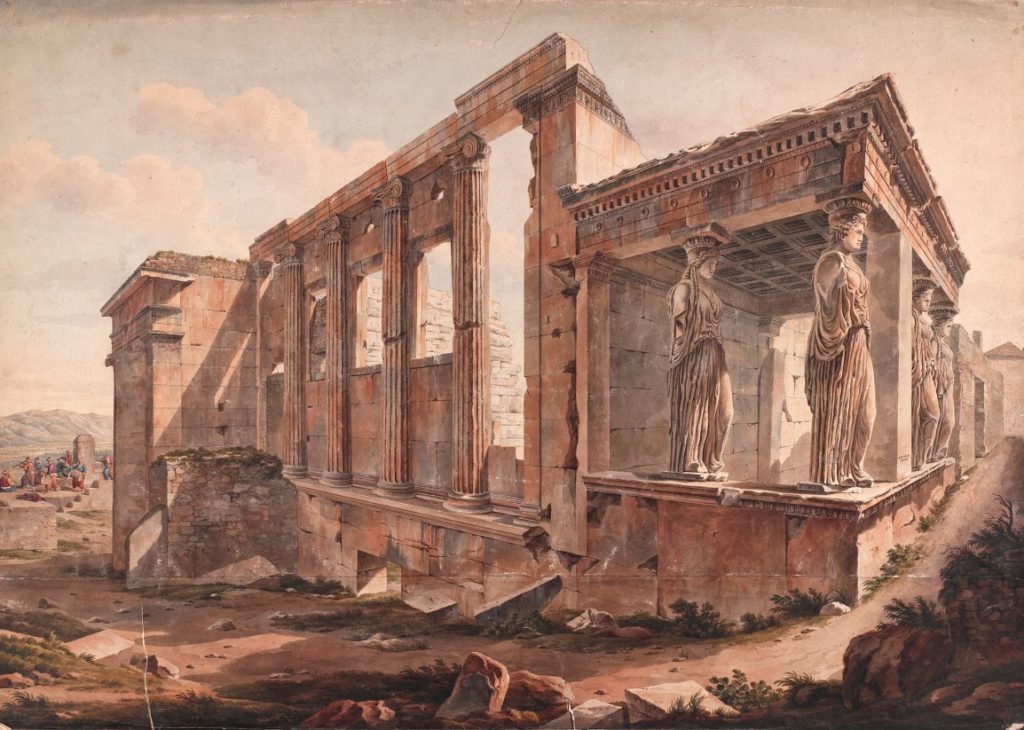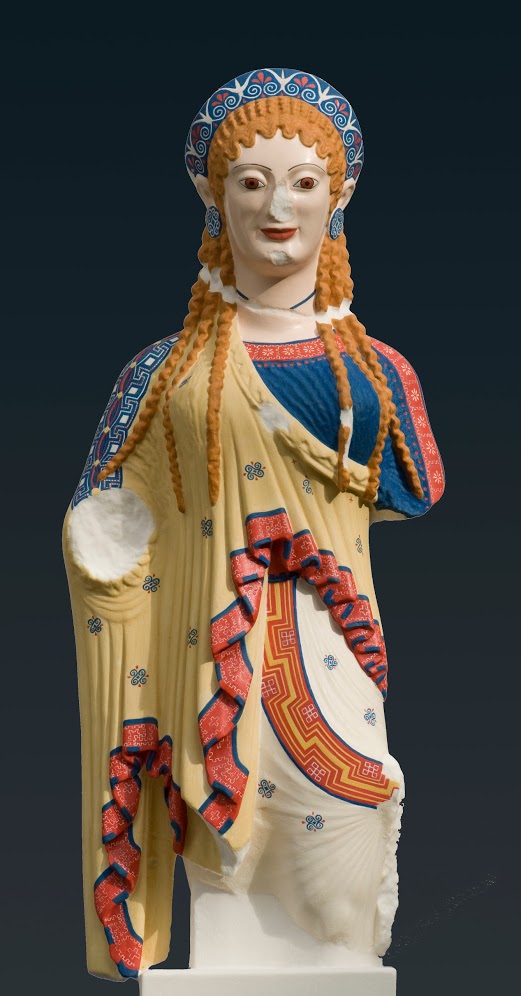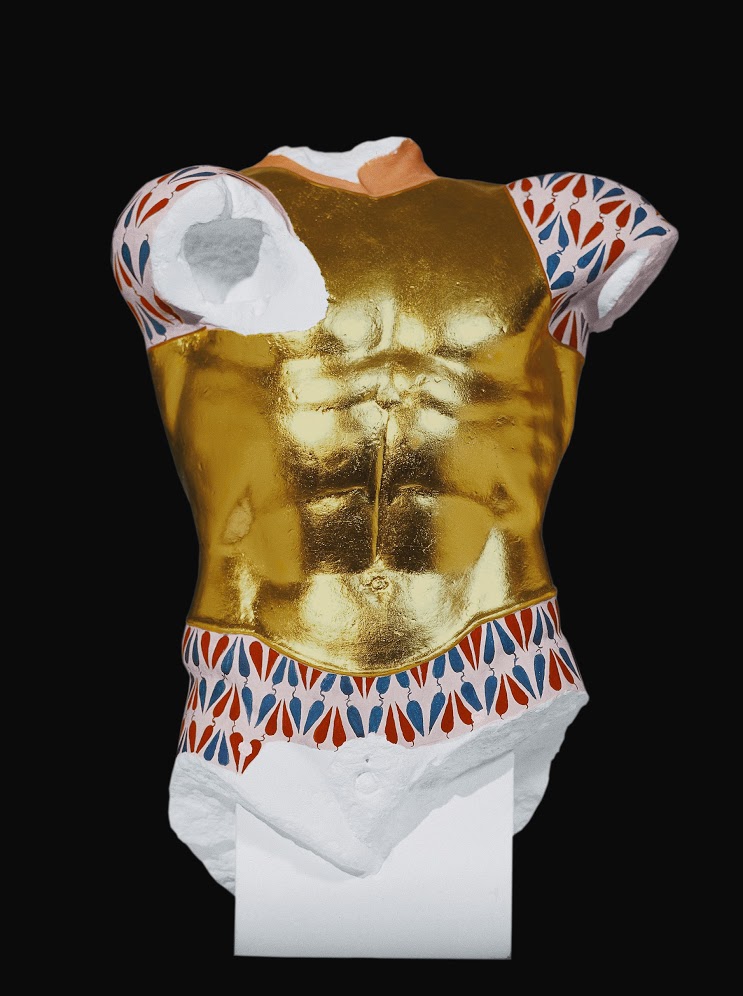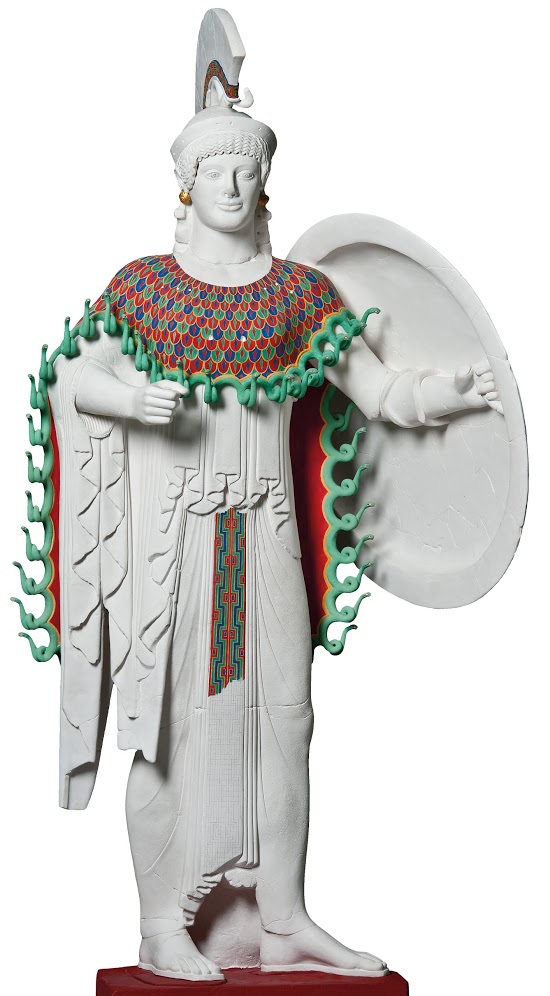If I were to ask you to describe the “classical” style, what would you say? Most would describe a stark white building with a large colonnade decorating its façade. Others might cite examples of ancient sculpture; white marble icons of figurative beauty and mathematical proportions. I often like to joke with my students that, for the most part, we’ve got it all wrong.
Regardless of the fact that white marble classical architecture, sculpture, and the artworks they inspire are incredibly beautiful, historians have proven that, originally, they were painted with vivid colors. In fact, a majority of classical Greek sculpture wasn’t even fabricated in marble at all, but rather bronze.


The Legion of Honor in San Francisco will be opening a great exhibition on October 28 that seeks to highlight this misconception. “Gods in Color: Polychromy in the Ancient World” will present ancient sculpture in their original, vibrantly colored glory. “Defying the idea of the stark white marble of antiquity,” the museum reports, “the installation is the result of over 30 years of groundbreaking research in pigmentation of ancient sculpture by international scientists and archaeologists. On view will be nearly 40 reproductions of well-known Greek and Roman artworks painted in brightly colored authentic pigments, uniquely juxtaposed with 30 statues and carved reliefs from ancient Egypt, the Near East, Greece, and Rome from the Fine Art Museums of San Francisco’s own holdings, supplemented with magnificent loans from Californian and European collections.


“When the idea of classicism took hold during the Renaissance, artists like Michelangelo and other masters hailed form and composition, instead of color, as the most prominent and venerable features of ancient sculpture. Over time, knowledge of color in ancient sculpture became all but forgotten and any evidence of polychromy was ignored. But even today, after millennia of burial and exposure to the elements, faint traces of color pigments on ancient sculptures can sometimes be detected with the naked eye. Additionally, advances in technology and research have allowed for an understanding of the evolution and extent of ancient polychromy. Techniques such as ultraviolet fluorescence photography and the examination of ancient pigments via ultra-violet-visible (UV-VIS) absorption spectroscopy have allowed an international team of archaeologists and scholars to create astonishing color reproductions.


“This exhibition will not only challenge the widely accepted ideal of achromatic ancient sculpture, it will also address how this misconception has influenced the history of sculpture. Works from ancient Greece and Rome will also be joined by sculptures from Egypt and the Near East to reveal a fuller range of polychromy from across the ancient Mediterranean world.”
“Gods in Color: Polychromy in the Ancient World” will continue through January 7, 2018. To learn more, visit the Legion of Honor.
This article was featured in Fine Art Today, a weekly e-newsletter from Fine Art Connoisseur magazine. To start receiving Fine Art Today for free, click here.








